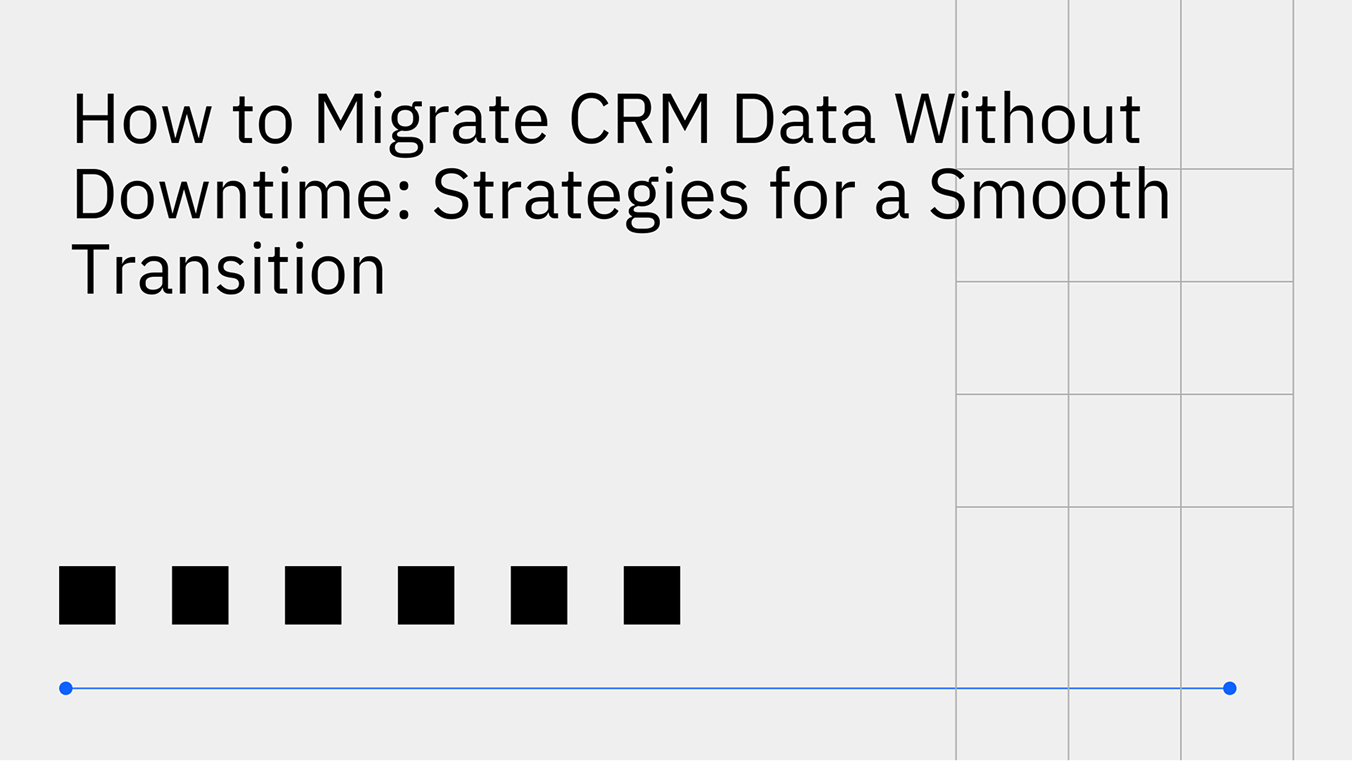

Data migration is the process of transferring data from one system, format, or platform to another. In the CRM world, it’s the bridge that ensures your customer, sales, and operational data moves securely and accurately when switching platforms or modernizing infrastructure.
Whether you're migrating from HubSpot to Salesforce or consolidating multiple CRMs, the objective is clear, maintain integrity, avoid interruptions, and keep your business running without missing a beat.
An organized process minimizes risks and guarantees accuracy. Here’s a practical framework:
To ensure a seamless experience for your teams and customers, follow these guidelines:
The right migration tools handle complex tasks that manual methods can’t. Choose platforms that support:
Stacksync, for example, combines cloud data replication with API-based workflow automation, ensuring migrations run faster, safer, and without interrupting sales or support operations.
Data migration is the process of transferring data from one system, format, or platform to another. In the CRM world, it’s the bridge that ensures your customer, sales, and operational data moves securely and accurately when switching platforms or modernizing infrastructure. Whether you're migrating from HubSpot to Salesforce or consolidating multiple CRMs, the objective is clear, maintain integrity, avoid interruptions, and keep your business running without missing a beat.
Every CRM holds the pulse of your business customer records, deal history, and communication logs. Migrating this data is more than a technical step; it’s an operational necessity that shapes how quickly teams adapt to new systems. Done right, data migration eliminates silos, improves analytics, and supports growth.
Key advantages include:
Companies undergo data migration for several reasons from scaling to modernization. Common triggers include:
Not every migration fits the same mold. Businesses typically choose between three main approaches:
Solutions like Stacksync specialize in incremental data transfer and real-time migration sync, ensuring your teams keep working even as millions of records are replicated behind the scenes.
Migrating CRM data can be complex, especially when dealing with large volumes, custom fields, and API limits. The main challenges include:
Platforms with bulk data import automation, error handling, and secure rollback workflows like Stacksync address these issues seamlessly.
Migrating CRM data doesn’t have to mean downtime, risk, or lost information. With proper planning and the right technology, you can transition smoothly while maintaining complete operational continuity.
Platforms like Stacksync make it possible through real-time synchronization, incremental transfers, and automated rollback systems empowering teams to modernize without disruption.